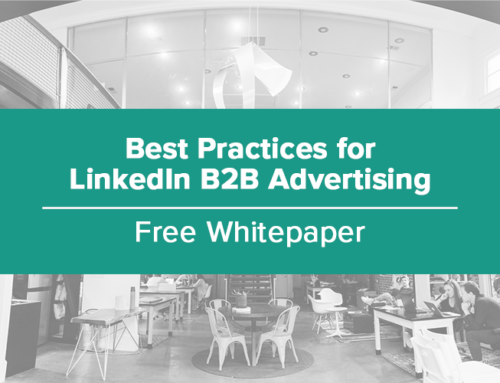
Subject lines are arguably the most important part of your email marketing message. People today receive way more emails than they would want to read in a day. So they choose to open the most interesting/relevant ones based on one thing:
The subject line.
No matter how great your email content is, there’s no way it can drive conversions without a powerful subject line in front of it. Here are a few key strategies you can use to write subject lines that convert:
Choose the Right Sender Name
A prominent element that appears right alongside your subject line is the sender name. Many businesses use an impersonal sender name, such as “noreply@company.com.” All this tells subscribers is that they’re not communicating with a real person.
Even if your email really is just from the company as a whole, use a sender name that’s from a real person, such as your CEO or marketing manager. This gives subscribers the impression that there’s a person behind the message, encouraging them to click through and read.
Optimize for Length
There’s been a lot of research into what the perfect subject line length is. Some say subject lines with 1-5 words get the highest open rates. Others say 6-10 words or 11-15 words. There are so many factors that impact whether or not people open an email, it’s hard to prove what length really matters.
So instead of counting words or characters, it’s better to focus on using your subject line real estate in the best way possible. For starters, avoid writing overly long subject lines. They might get cut off depending on the mail client or device. iPhone’s native mail app cuts off most subject lines:
People also have short attention spans, and won’t feel inclined to read your overly long subject line before deciding to keep scrolling.
A good rule of thumb is to only use the number of words you need to convey your key message. Compare these two subject lines:
Confirmation: Your order number 408432376084 has shipped! Tracking information enclosed.
VS
Your order is on the way! Here’s how to track it.
Both provide all the necessary information, but one’s significantly shorter. Having a shorter subject line gives you an additional opportunity to drive conversions by encouraging clicks. When your subject lines are shorter, some mail clients (e.g. Gmail) display more preview text from the body email:

So optimize your subject line and the first line of body text to compliment each other and drive conversions.
Segment and Personalize
Make your subject lines as relevant as possible to the individual subscribers you’re emailing. This makes it easier to capture their attention and encourage them to click. Start by segmenting your audience based on demographic information and online behavior. Then personalize your subject lines based on these insights. For example, if your subscribers live in certain cities, you can send out personalized recommendations for their locations.
Another easy way to personalize your subject lines is by including their first name. Using email marketing software, you can create personalization tokens to dynamically insert the subscriber’s first name into each subject line.
Probably the best way to personalize is by tailoring both your email content and subject line to subscriber interests. If you’re a pet supply retailer and you know a subscriber has purchased cat supplies in the past, then include an offer in your subject line for a new line of cat toys. The more relevant you make your subject lines to the interests of individual subscribers, the more likely they are to convert.
Use Emotional Triggers
Your subject line could be timely, relevant and personalized, and it still might not get a lot of opens. People are busy, so you need to give them a strong reason to read your email now, instead of scrolling past, thinking they’ll get to it later.
You can do this by using emotional triggers. These are psychological strategies to invoke emotions in your audience that drive them to act now. The most popular emotional triggers are:
- Curiosity — Reveal something intriguing that drives subscribers to click through and learn more. Turing your subject line into a question is a great way to invoke curiosity.
- Scarcity — Offer something in limited quantity (e.g. A discount price for the first 5 webinar signups).
- Urgency — Offer something for a limited time (e.g. A 48-hour weekend sale).
Here’s an example of a subject line from Old Navy that invokes urgency:

Scarcity and urgency cause “fear of missing out,” which can drive subscribers to act now instead of later.
Test, Rinse, Repeat
It’s important to remember that there’s no such thing as the perfect subject line. Every email marketing audience is unique and different things will encourage them to click. So if you want to write the best subject lines that drive conversions, A/B testing should be your priority.
Start by cleaning up your email list and segmenting out your audience. Remove inactive subscribers from your list since they’re never going to open your emails anyway. Next segment out subscribers who always open your emails so their data doesn’t factor into your experiment. You want to focus specifically on targeting subscribers who may or may not engage based on your subject lines.
Now you’re ready to experiment. Just avoid testing two radically different subject lines. You’d learn which one is better, but you won’t understand why. Instead, make minor adjustments to a single subject line.
For example:
- Should you include first name personalization or not?
- Do you get more opens when the subject line is posed as a question or a statement?
- What if you include a call-to-action (e.g. Buy now!)?
- What if you include an offer in the subject line?
- Etc.
Every email you send out is an opportunity to test and learn. Keep creating subject line variations to discover what kind of message drives your audience to convert.




